#Nieliqui
Explore tagged Tumblr posts
Text
Tragically emotional about the version of Nielíqui that lives in my head and who literally no one else knows about but who is SUCH a cool and interesting and haunting character
I see your eternal maiden and raise you a life-death-rebirth deity. Even in Valinor the Ainur and Eldar must bear witness to aging and death and be reminded that they are a part of life, that life cannot exist without decay. You will watch this Vala grow old and die and be born again and you will know that is why you get to live. You may never die but you are still not separate from the world and the world is a cycle of life and death.
4 notes
·
View notes
Photo


Happy International Women's Day!
The Female Ainur:
First picture, (left to right)
top row: Arien, Estë, Estë's Maidens
middle row: Goldberry, Ilmarë, Meássë
bottom row: Melian, Nessa, Nieliqui
Second picture,
top row: Nienna, Riverwoman, Thuringwethil
Middle row: Uinen, Ungoliant, Vairë
bottom row: Vána, Varda, Yavanna
#Arien#Estë#Este#Goldberry#Ilmarë#Ilmare#Meássë#Measse#Melian#Nessa#Nieliqui#Nienna#Riverwoman#Thuringwethil#Uinen#Ungoliant#Vairë#Vaire#Vána#Vana#Varda#Yavanna#Ainur#Valar#Maiar#Tolkien#Tolkien Moodboard#Tolkien Aesthetic#Ainur Moodboard#Ainur Aesthetic
85 notes
·
View notes
Text
the valar that are married... did they marry at some point in their time or did they just pop out of eru’s thought wed and all?
#like i understand some of them being created and being ''brothers'' instantly#it just be like that when you're born.#but when. do any of them. marry each other??#at the very least i need a timeline for orome and vana so i can guestimate#when nieliqui came to be#『❥』 ooc ╱╱ bucky's yellin'.
1 note
·
View note
Photo


There sang Amillo joyously to his playing, Amillo is who is named Omar, whose voice is the best of all voices, who knoweth all songs in all speeches; but whiles if he sang not ot his brother’s harp then would he be trilling in the gardens of Oromë when after a time Nieliqui, little maiden, danced about its woods.
#tolkien rp#silmarillion rp#lotr rp#tolkien roleplay#silmarillion roleplay#lotr roleplay#indie roleplay#indie rp#( nieliqui )#❤┊promo#❤┊self promo
5 notes
·
View notes
Photo

Gaderian. verb to bring together, gather.
#tolkien rp#lord of the rings rp#silmarillion rp#hobbit rp#fantasy rp#multi muse rp#ch. nieliqui#&┆self promo┆❤#&┆promo┆❤
1 note
·
View note
Photo

Ómar
Ómar, also called Amillo, is the chief of the Liltini, the fiery maenad spirits of dance and song, who spread joy and love and merriment throughout the world. He is the last of the Maiar to enter Arda, and he was singing as he came. He is the greatest singer in all of Arda, and his names mean The Voice, and One of the Happy Folk. He is the brother of Salmar Lirillo, and together they make music so beautiful that even the Valar stop to listen. He is the patron of words and spoken language, and thus is the patron of the words of spells, which give them their essence and direction. He would often wander the woods of Oromë singing for his sister Nieliqui, who danced as he sang.
1 note
·
View note
Text
One of my favorite parts of having an oc for something is how, given enough time, more ocs will start to spawn around them in order to fill in narrative gaps and then you ALSO are obsessed with those characters too
#nieliqui and ingwion are technically not ocs but the extent to which i have changed them and built lore for them they are sure not what jrrt#had in mind anymore#nieliqui especially like. i took the maiden thing and said what if instead shes perpetually cycling through the stages of life/development#like a phoenix minus the fire aspect (except her kid is literally named after fire)#i am having nieliqui thoughts tonight#i am also having thoughts on beorn’s mom (workshopping her name) who my oc is also connected to#and she IS actually an oc#hravahin#lotr oc#ecdysing#at some point i will probably commit to retagging stuff with the new name i decided on for hravahin because i really like it and im at this#point sure enough that it passably works so he officially has a middle-earth name now instead of just what he was called in valinor#but idk when ill get around to it#liltanor
1 note
·
View note
Photo


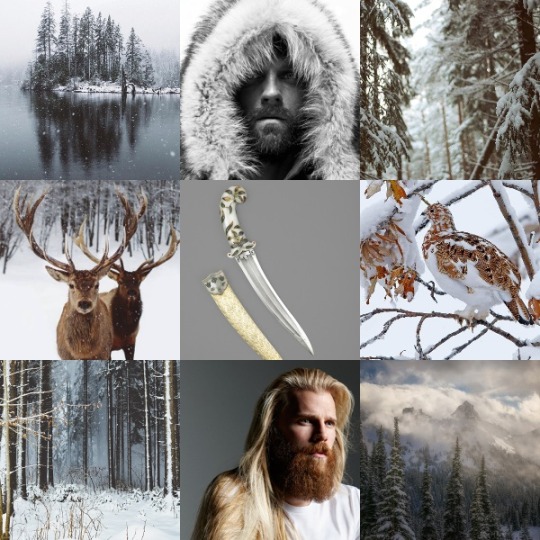
Oromë (Winter Aesthetic)
Oromë was the husband of Vana and the brother of Nessa, and was known as The Lord of Forests, The Huntsman of the Valar, and The Great Rider. He was known for his love of hunting and when the Valar retreated from Middle-earth to Aman following the destruction of the two lamps, he would occasionally return to hunt the creatures of Melkor. It was during one of these hunts that he discovered the first elves wandering in the starlight, and he named them the Eldar, The People of the Stars. After dwelling with them for a while he returned to Aman to inform the rest of the Valar that the first Children of Illuvatar had awakened, and were already being plagued by Melkor’s creatures. It was eventually decided to invite the Eldar to join the Valar in Aman, setting in motion the beginning of the major events that lead to The Silmarilion.
Oromë loved horses and hounds and rode on a great horse named Nahar. It was for this reason that he was known of and loved by the people of Rohan, who claimed that their great horses known as the Mearas were descended from steeds Oromë brought from the West. It was also believed that the wild oxen the lived near the sea of Rhun were descended from Oromë’s oxen as well. Huan, The Hound of the Valar, was one of Oromë’s hunting dogs who had been granted special powers by the Valar.
Oromë was one of the Aratar and had a great horn called the Valaroma that he blew, which sounded like thunder and frightened even Melkor himself. It was for this reason that the people of Rohan named him Bema, a name that comes from a rootword for trumpet.
In Tolkien’s early writings, when the Valar were more like Greco-Roman gods and could have children, Oromë was the son of Aulë and Yavanna and he and Vana had a daughter named Nieliqui.
#Oromë#Orome#Oromë Moodboard#Oromë Aesthetic#Orome Moodboard#Orome Aesthetic#Ainur#Valar#Aratar#Eldar#Huan#Nahar#Tolkien#Tolkien Moodboard#Tolkien Aesthetic#Ainur Moodboard#Ainur Aesthetic#Nieliqui#Vana#Aule#Aulë#Yavanna#Silmarilion#Valaroma#Bema#Tauron#Aldarom#Araw
46 notes
·
View notes
Photo

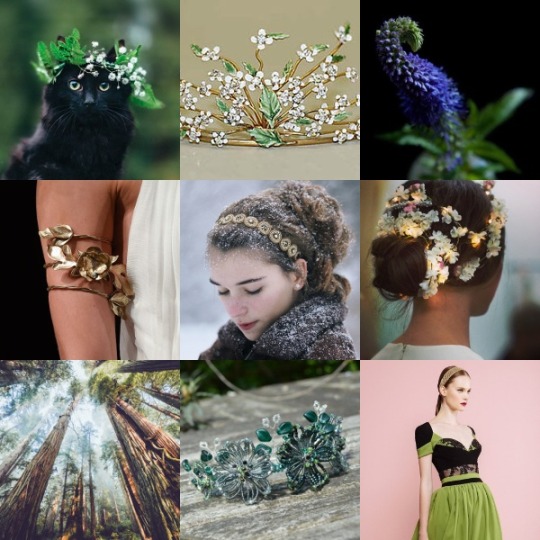

Nieliqui
The Little Maiden of the Valar
Nieliqui was the young daughter of Vána and Oromë at a point in Tolkien's early works when the Valar were more like Greco-Roman gods and had children with each other. These children of the Valar were referred to as the Valarindi, and these characters existed before the concept of the Maiar was developed. Even Melkor had a son at this stage (Kalimbo/Kosomot) with an ogress whose name was either Ulbandi or Fluithuin. Most of the Valarindi characters were dropped, but a few managed to be reincorporated as Maiar and Kalimbo/Kosomot was reimagined as the Balrog lord Gothmog. Those who were dropped became part of a group of characters known as The Lost Valar who only appear in Tolkien's early drafts.
Not much is said about Nieliqui besides the fact that she was a small maiden who liked to dance in her father's woods. This often took place while Ómar-Amillo (another Lost Vala), who was the Vala of song and music, would sing in the woods. Both of Nieliqui's parents had strong connections to nature, especially trees, and some fans have imagined her as a dryad-like character. Her love of dancing suggests that she also takes after her aunt Nessa, the Vala of dancing.
At this stage in Tolkien's writings, Nessa and Oromë were the children of Aulë and Yavanna, making Nieliqui the grandchild of two of the most powerful Valar. Another of the Valarindi was Telimektar, the warrior son of Tulkas and Nessa, who was Nieliqui's cousin.
#Nieliqui#Nieliqui Moodboard#Nieliqui Aesthetic#Ainur#Lost Valar#Valarindi#Vana#Vána#Orome#Oromë#Tolkien#Tolkien Moodboard#Tolkien Aesthetic#Book of Lost Tales#Nessa
15 notes
·
View notes
Photo


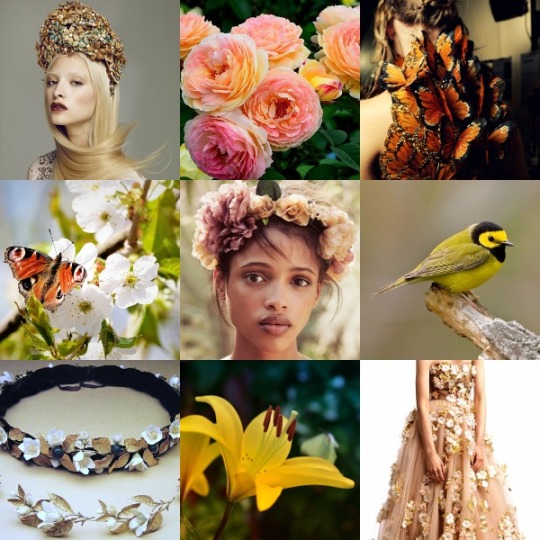


Vána
The Ever-Young, The Beauty
Vána was the younger sister of Yavanna and the wife of Oromë and, like her sister, was associated with the flora and fauna of Middle-earth. Whereas Yavanna is concerned with all plants and animals, Vána is mostly mentioned in association with flowers and songbirds and seems to represent the beauty of the natural world. Her connection to blooming flowers might also indicate that she was associated with the season of spring. She has gardens of golden flowers, which she used to decorate Nessa (the sister of Vána’s husband) for her wedding to Tulkas. It’s said that all flowers open when she walks by and all birds sing at her coming. In Valinor she was served by two of the most powerful Maiar, Melian and Arien, though were destined to eventually leave her service.
Vána was more prominent in Tolkien’s early works than she is in the published Silmarillion. She helped cause the golden tree Laurelin to spring forth, and she loved the tree very much. After the destruction of the Two Trees she and Irmo/Lorien tried to revive them with their stored dews but were unsuccessful. Then, even after Yavanna fails to revive Laurelin, Vána embraces it in mourning and her love causes one last fruit to come forth to become the Sun. She cut her golden hair short to weave into sails for the ship of the Sun that would be guided by Arien, who at that time was known as Urwen/Urwendi. Vána is eager to invite the elves to come live in Valinor, but her desire for peace and happiness also causes her to support the Hiding of Valinor from the elves following the destruction of the Two Trees and the First Kinslaying.
At a point in Tolkien’s writings when the Valar could have children and the Maiar didn’t exist, Vána and Oromë had a young daughter named Nieliqui. She was a Vala maiden who enjoyed dancing in her father’s woods, sometimes to music played by the Vala Omar.
#Vána#Vana#Vána Aesthetic#Vána Moodboard#Vana Aesthetic#Vana Moodboard#Ainur#Valar#Tolkien#Tolkien Moodboard#Tolkien Aesthetic#Book of Lost Tales#Silmarillion#Laurelin#Orome#Yavanna#Arien#Melian#Nieliqui#Nessa
41 notes
·
View notes
Photo




The Valarindi (The Children of the Valar)
In the earlier stages of Tolkien's writings, the Valar were less angelic and more like pagan (especially Greco-Roman) deities. One of the most notable features at this point was that some of the married couples among the Valar had children. The term for these beings was Valarindi, and it was used to refer to any child (or in a couple of cases, grandchild) of one of the Valar. This group of beings included:
Nessa, the Dancer, The Swift
Nessa was the daughter of Aulë and Yavanna, the sister of Oromë, and was associated with dancing, deer, and speed. Her wedding to the Vala Tulkas was the first and only marriage between two Valar to take place within Arda itself. The fact that she is strongly associated with deer and nature and that her brother is connected to hunting makes her vaguely reminiscent of the Greek goddess Artemis. Meanwhile, her connections to love, dancing, and beauty and her marriage to the warrior Vala Tulkas are comparable to Greek Aphrodite and Roman Venus. Nessa and Tulkas had a son named Telimektar in the earliest stages.
Oromë, The Huntsman of the Valar
Oromë was the son of Aulë and Yavanna, the brother of Nessa, and the Lord of the Forests and the Huntsman of the Valar. After the Valar retreated to the continent of Aman, Oromë would still occassionally return to Middle-earth to hunt the creatures of Melkor, and it was during one of these trips that he came upon the first elves. He was also strongly associated with horses and was especially loved by the people of Rohan, who believed that their horses were descended from ones he brought from the West. Oromë is like a mix of the Greek god Apollo with the many horse and forest gods of the different Celtic tribes, who the Romans often adopted as aspects of Apollo. Oromë was married to Vána, who was technically his aunt, and they had a daughter named Nieliqui; this relationship is very reminiscent of those of many Greek gods and goddesses.
Fionwë-Urion,
Fionwë-Urion was the son of Manwë and Varda, the brother of Erinti, and a warrior associated with light and fire. His connection to fire can be seen in his love for Arien, who at this point was called Urwen/Urwendi, with the names Urwen and Urion both coming from a rootword meaning fire or flame. At one point Tolkien developed a story where Melkor tried to claim Arien/Urwen as a wife, attacking her while she was guiding the Sun through the sky. She released herself from her body in an explosion of fire and "died", permanently scarring Melkor and causing the Sun to go out of control and burn parts of Arda, creating the deserts. It was said that Fionwë-Urion would kill Melkor/Morgoth in the last battle at the end of days due to his love for Arien/Urwen. This story was eventually dropped before The Silmarilion was published; Melkor fears Arien too much to attack her, while the Ainu who is in love with Arien is Tilion, the guide of the Moon. Fionwë-Urion eventually evolved into the Maia Eonwë, in the process also absorbing the character Nornorë, the Herald of the Valar, who became one of the "Lost Valar".
Erinti,
Erinti was the daughter of Manwë and Varda and the sister of Fionwë-Urion. At one point, she was written as the sister of Salmar/Noldorin and Ómar/Amillo instead of being the sister of Fionwë-Urion, though their parents aren't specified. At that stage, the three siblings were the only Ainur who left Aman to live with the elves of Tol Eressea. Erinti is associated with love, beauty, and music, which is fitting since Ómar and Salmar are both associated with music as well. She was eventually rewritten as Manwë and Varda's daughter, but despite this important parentage not much was said about her. Though the concept of the Valarindi was eventually dropped and the Valar became more like angels, Erinti survived as Ilmarë, the handmaiden of Varda. Together with Eonwë, who was once her brother Fionwë-Urion, she was a chief of the Maiar.
Nieliqui, The Little Maiden of the Valar
Nieliqui was the daughter of Oromë and Vána, and references to her as "the little maiden" suggest she may have been the youngest and most childlike of the Valar. Not much is said about Nieliqui besides the fact that she was a small maiden who liked to dance in her father’s woods. This often took place while Ómar-Amillo (a Lost Vala), who was the Vala of song and music, would sing in the woods. Both of Nieliqui’s parents had strong connections to nature, especially trees, and some fans have imagined her as a dryad-like character. Her love of dancing suggests that, she also takes after her aunt Nessa, the Vala of dancing. Nieliqui disappeared from Tolkien's writings once he abandoned the concept of the Valarindi and created the Maiar, and she doesn't appear in The Silmarilion.
Telimektar, The Warrior of the Sky
Telimektar was the son of Tulkas and Nessa, and a mighty warrior who fought hard in the struggles against Melkor/Morgoth. He is described as having a long sword kept at his waist by a silver girdle. His face and weapons are also described as heaving a silver gleam. In early writings, the constellation Orion (which contains many stars classified as blue giants) is Telimektar, with the star Nielluin/Helluin (Sirius) being described as his toe. He is in the sky as a guard against Morgoth, and he was given stars by Varda to mark his shape so the Valar would know he was there. He is also said to have diamonds on his sword’s sheath that will glow red when the last battle occurs at the end of the world. Telimektar was eventually dropped, but one of the many variations of his name, Telumehtar, appears as a name for the constellation Orion in the appendices of Lord of the Rings, and as the name of the 28th King of Gondor.
Once Tolkien dropped the concept of the Valarindi and created the angelic Maiar instead, the fates of these characters changed. Oromë and Nessa became Valar in their own right, Fionwë-Urion and Erinti morphed into Maiar, and Nieliqui and Telimektar were dropped. Even Melkor once was envisioned to have a son named Kalimbo/Kosomot with an ogress named Fluithuin or Ulbandi, but this character changed into Gothmog, Lord of the Balrogs.
#Ainur#Valar#Maiar#Valarindi#Oromë#Oromë Moodboard#Oromë Aesthetic#Orome#Orome Moodboard#Orome Aesthetic#Nessa#Nessa Moodboard#Nessa Aesthetic#Fionwë#Fionwë Moodboard#Fionwë Aesthetic#Fionwe#Fionwe Moodboard#Fionwe Aesthetic#Urion#Erinti#Erinti Moodboard#Erinti Aesthetic#Nieliqui#Nieliqui Moodboard#Nieliqui Aesthetic#Telimektar#Telimektar Moodboard#Telimektar Aesthetic#Ilmarë
93 notes
·
View notes
Photo
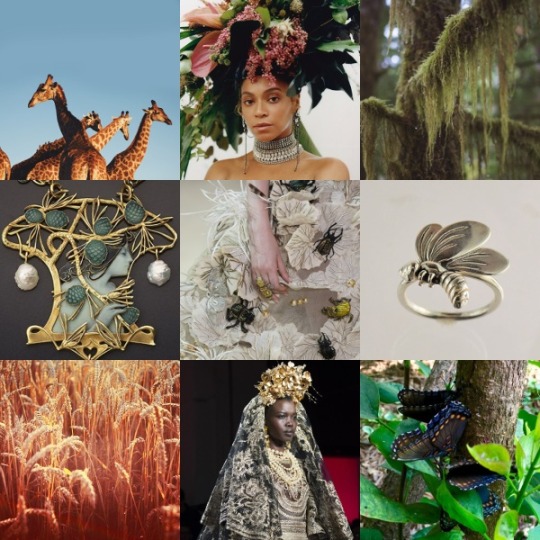
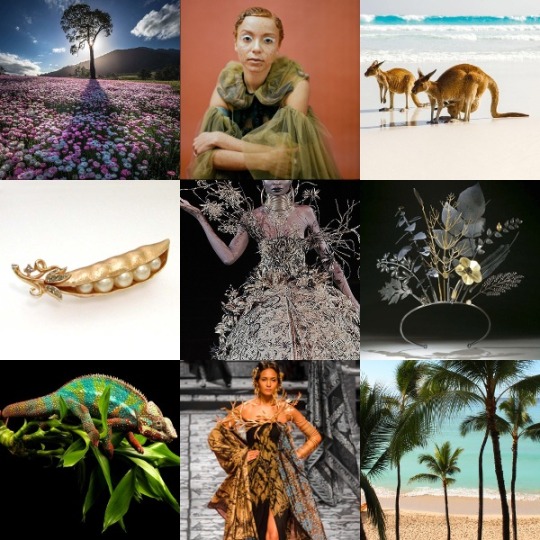


Yavanna
Yavanna Kementári was a Valië, responsible for all growing things (the olvar and the kelvar) in the earth, from the towering trees to the moss on the rocks.
Yavanna was one of the Aratar and was next to Varda in reverence. She was the elder sister of Vána and the consort of Aulë, and Melian of the Maiar was of her kin. Her usual form was that of a tall woman robed in green. She has also been seen in the form of a tall tree growing from the waters of Ulmo to the winds of Manwë spilling golden dew from her branches, which made the barren earth green with corn.
In the beginning of days, Yavanna planted the first seeds of Arda and tended to the growing plants and creatures. Since Melkor wanted to create his own things, but only had the power to corrupt and distort the creations of others, Yavanna's plants and animals were his main targets prior to the arrival of the Children of Illuvatar. Because of this, Yavanna was one of the most active of the Valar in opposing Melkor, supporting all plans against him.
After Melkor was temporarily expelled from Arda the Two Lamps were raised, initiating the Spring of Arda, when the seeds Yavanna had planted grew and life came to Middle-earth. After the destruction of the Two Lamps and the isle of Almaren, she put many of the creatures and plants in Middle-earth under a hibernation-like spell called the Sleep of Yavanna.
After the destruction of the Two Lamps, the Valar retreated to the continent of Aman, which they fortified and where they founded Valinor. On the green mound Ezellohar Yavanna sang and, with help from Nienna, created the Two Trees of Valinor. They brought light to Valinor at a time when the only other source of light was the stars, and they were considered Yavanna's greatest creations. Despite this, Yavanna didn't ignore Middle-earth, and would come there from time to time to heal the hurts of Melkor. Later, when the elves built the city of Tirion, Yavanna made a tree called Galathilion that was similar to Telperion except that it didn't produce any light. The elven woman Galadriel's hair was described as a mesh that had caught the light of the Two Trees, and was said to be the inspiration for the creation of the Silmarils.
During the Music of the Ainur, Yavanna's mind joined with that of Manwë to concieve the Great Eagles. During this time she also sang of great trees reaching up to recieve the rains of Manwë and Ulmo, and some off the trees sang to Illuvatar. Later, after Illuvatar allowed Aulë's creations, the Dwarves, to survive, this was revealed to be the conception of The Shepherds of the Trees, othewise known as the Ents. After Aulë pointed out to her that even the elves and men would also need to use her trees, Yavanna lamented and questioned if anything she had made would ever be free from the dominion of others. Manwë brought her concerns before Eru Illuvatar, who took pity on Yavanna and created the Ents to protect the trees.
After the destruction of the Two Trees Yavanna examined their remains and told the other Valar that if she could use the light of the Silmarils she could heal them. Fëanor refused to give up the Silmarils, which he considered to be his greatest creation; unknown to him Melkor had already stolen them. Yavanna sang and Nienna washed the filth of Ungoliant away with her tears, and the two were able to bring forth one last flower of Telperion and one last fruit of Laurelin. These were put in vessels made by Aulë and set in the sky by Varda, becoming the Moon and the Sun. The raising of the Sun and Moon ended the Sleep of Yavanna, and was the signal for the awakening of the first humans.
As a reward for the humans (Edain) who had aided the Valar in the War of Wrath, the land of Andor was raised from the sea by by Ossë, established by Aulë, and enriched by Yavanna. The Edain who came to this island created the kingdom of Numenor, which became an important realm in the following ages. Many plants were brought from Valinor as gifts by elves who visited Numenor, so that it had a diverse ecosystem that included vegetation not found anywhere else in Middle-earth. When Numenor fell under the influence of Sauron it was eventually destroyed in a flood, with the surving good Numenorians establishing the realms of Gondor and Arnor in Middle-earth.
Aiwendil (Lover of Birds), a Maia who was fond of animals and especially birds, was a servant of Yavanna who later went to Middle-earth as one of the Istari, taking the name Radagast (Tender of Beasts) the Brown.
Her epithet Kementári means "Queen of the Earth", and at an ealier stage of Tolkien's writings it was Palúrien ("bosom of earth") instead.
In early stages of Tolkien's writings, Yavanna and Aulë were the parents of Nessa and Oromë, and the grandparents of Nieliqui and Telimektar.
#Yavanna#Kementari#Kementári#Palurien#Palúrien#Yavanna Moodboard#Yavanna Aesthetic#Ainur#Valar#Aratar#Two Trees of Valinor#Telperion#Laurelin#Galathilion#Aiwendil#Radagast#Ainur Moodboard#Tolkien#Tolkien Moodboard#Tolkien Aesthetic#Melian#Ents#Shepherds of the Trees
49 notes
·
View notes
Photo
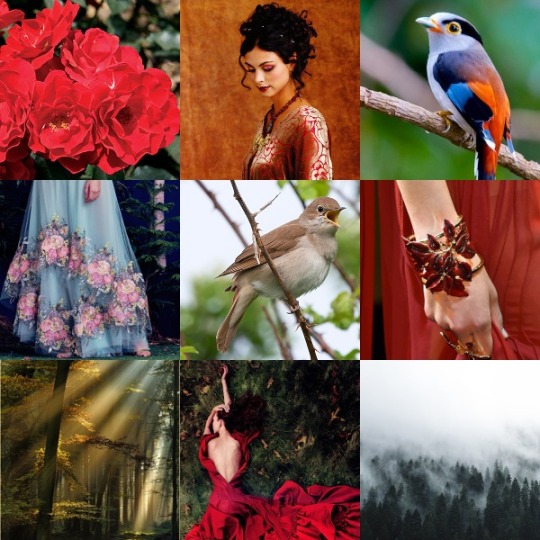
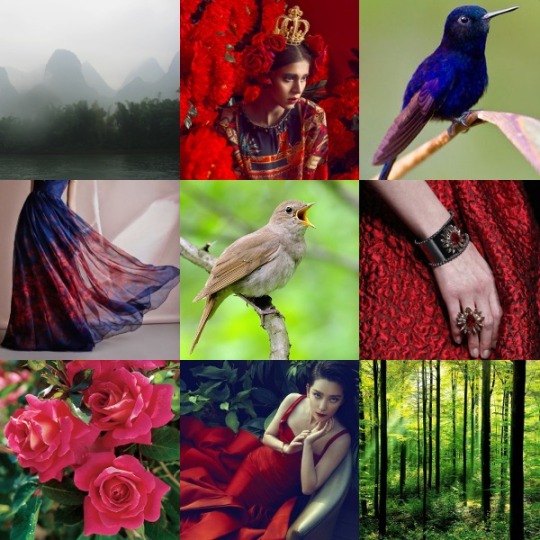
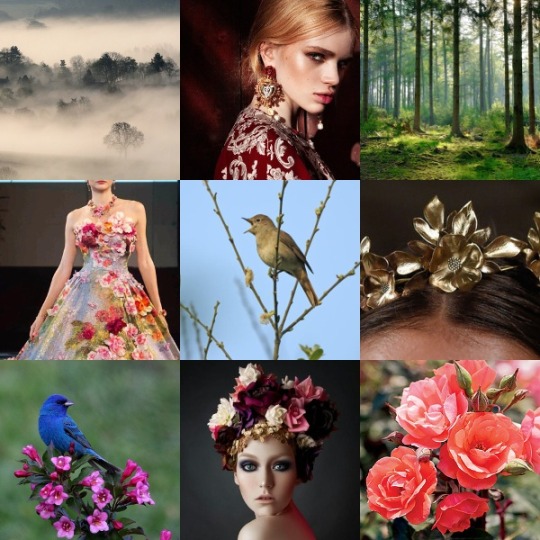

Melian
The Queen (Tóril)
Earlier names: Gwenniel, Gwenethlin, Gwendeling, Gwendelin
Melian, who served both Vána and Estë while in Valinor, was associated with songbirds (particularly nightingales) and forests and was said to be very similar to Yavanna. Her name is Sindarian and means Dear Gift or Gift of Love; her Quenya name is Melyanna. She tended the trees in the gardens of Lórien and when she sang during the mingling of lights of the Two Trees even the Valar themselves would stop to listen to her. Like Oromë, Yavanna, and Ulmo, Melian was unable to completely abandon the rest of Arda when the Valar first retweeted to Aman, and she came often to the forests of Middle-earth because she loved the shadows of the trees. When the elves first awoke in Cuiviénen she came to Middle-earth and filled its silence with her singing and that of her nightingales.
She eventually met the elf Elw�� in the forest of Nan Elmoth and they fell in love, standing motionless for many years. This resulted in some of the Telerin elves who were journeying to Valinor remaining behind to search for him. After they recovered from their trance, Melian and Elwë gathered his remaining followers who had become known as the Eglath (The Forsaken) and founded the kingdom of Eglador, the first true elven kingdom in Middle-earth. These elves later became known as the Sindar (Grey Elves or Elves of Twilight) because they originally had left for Valinor and thus weren't considered Dark Elves, but since they didn't reach Valinor they weren't considered Light Elves either. Melian later protected this kingdom from evil with a powerful enchantment of confusing mists around it, leading the kingdom to be renamed Doriath, which means Land of the Fence. Her husband later became known as Thingol, and while he had originally desired to see the light of Valinor again, it is said that he was content with the light he saw in Melian's face. They would later have a daughter named Lúthien, making Melian the only Ainu (excluding some characters like Ungoliant whose status isn't clear) who has any children in Tolkien's published Silmarillion. In Tolkien's earlier works many of the Valar had children; some of these (like Nieliqui and Telimektar) were dropped, some of them (Ilmarë, Salmar, Eönwë) became the Maiar, and a few (such as Vána) became younger siblings of a Vala that had originally been their parent. But while some of the Valar had children (Valarindi) in Tolkien's earlier drafts, Melian has always been the only one who ever coupled with a non-Ainur being.
Melian was a wise and caring queen who tried to protect her own family and people as much as possible. She also aided outsiders against darkness, providing assistance to Turin and his mother and sister, and lifting the spell of Morgoth from Hurin. She also aided the elf Beleg Cuthalion in his quest for Turin, and was a strong friend and mentor to Galadriel. Galadriel's daughter Celebrían would eventually marry Elrond, one of Melian's descendants, and their daughter Arwen would go on to wed Aragorn, another descendant of Melian. She accurately predicted that someone with a powerful fate would be able to pass through her enchantments, and she advised Thingol not to send Beren on a quest for a Silmaril when he arrived as foretold. In the early, more peaceful years (the time during which Melkor was captive in Valinor) of their kingdom when their people were more scattered and mobile, Melian foresaw that war would come and pushed Thingol to establish a stronghold for their people. They partnered with the Dwarves of Belegost, who were friends with the elves, to build the city of Menegroth, the Thousand Caves. After the murder of her husband by the more greedy dwarves of Nogrod, she briefly visited Beren and Lúthien to warn them of the dwarves' treachery and other things before she departed back to Valinor. There she dwelt again in the gardens of Lórien from which she had come, reflecting on her sorrows.
Melian has a strong connection to many of the major characters in The Lord of the Rings trilogy. Celeborn, Galadriel's husband, is a relative of Melian's husband Thingol. Oropher, the grandfather of Legolas, was an inhabitant of Melian's realm. Through her great-granddaughter Elwing she is an ancestor of Arwen through Arwen's father Elrond, who was a son of Elwing who chose to live as an elf. Elrond's brother Elros chose to live as a man and founded the royal dynasty of Númenor, through which she is an ancestor of Arwen's husband Aragorn through the Lords of Andúnië. The Princes of Belfalas are mentioned as being close kin of the Lords of Andúnië making them also descedants of Elros; they were probably related through either a daughter and/or a lesser son of one of the Lords of Andúnië. One member of the Princes of Belfalas, Morwen Steelsheen, married Thengel the 16th King of Rohan and became the mother of Théoden and his sister Théodwyn. Therefore, Éomer and his sister Éowyn are also descended from Melian. Another branch of the Princes of Belfalas was the Princes of Dol Amroth, who were heavily affected by Sindarin culture. Finduilas of Dol Amroth married Denethor II, Steward of Gondor, and became the mother of Boromir and Faramir making them descendants of Melian as well. Finduilas' brother Imrahil was the 22nd Prince of Dol Amroth and he and his three sons helped Gandalf lead the defense of Minas Tirith. Imrahil's daughter Lothiriel later married Éomer after the War of the Ring was over, becoming the new Queen of Rohan, while Faramir and Éowyn became the Lord and Lady of Ithilien. It can therefore be said that Melian is both associated with literal trees (she loves forests) as well as family trees due to her connection to most major royal families of Middle-earth.
The Princes of Dol Amroth are interesting because they are a branch of half-elven people who aren't given much focus in Tolkien's writings. They are said to be descended from Imrazôr, the first Prince of Dol Amroth, and Mithrellas, a Sindarin elf maiden who got lost on a journey to Belfalas. This lineage is presented as being more legendary and less certain than those of other half-elven such as Elwing and Eärendil. But the Princes of Dol Amroth were seen by people as having very elvish appearances, something that is even noticed 22 generations later by Legolas when he meets Prince Imrahil. Imrahil's grandson, who was the son of Lothiriel and Éomer, also displayed displayed elvish characteristics from very early on (possibly even from birth) hence his name Elfwine (Elf-friend) The Fair. If the ancestry is true, then the marriage of Lothiriel and Éomer and the birth of their son unites this otherwise seperate line of half-elven to the lines that are already descended from Melian.
It's notable that Melian and her immediate family members were all distinguished amongst their races: Melian was regarded as the wisest and most beautiful of "her people" (it isn't clear if this is referring to all Maiar or just the ones of Vána and/or Estë) as well as the best singer, while her husband Thingol was considered the tallest of the elves and their daughter Lúthien was considerd the most beautiful.
#Melian#Melian Moodboard#Melian Aesthetic#Maiar#Ainur#Silmarillion#Tolkien#Tolkien Moodboard#Doriath#Menegroth#Eglador#List Melian#Girdle of Melian#Thingol#Luthien#melian of doriath
61 notes
·
View notes
Photo

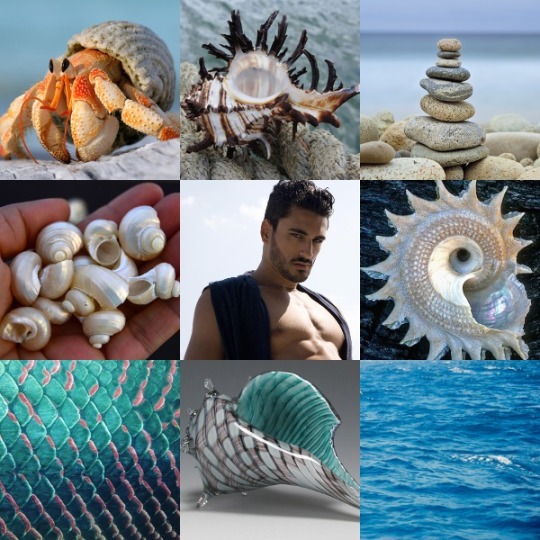


Salmar
The Harp-Player, The Singer
Other names: Noldorin, Lirillo, Golthadriel
Salmar is a Maia of the Vala Ulmo who is briefly mentioned in The Silmarillion as the one who made the Ulumúri, the great conch shell horns of Ulmo. When he plays them, they produce a beautiful sound that results in a deep longing for the sea.
In Tolkien’s earlier works, Salmar has other names such as Noldorin, Lirillo, and Golthadriel. One passage describes how, when Ulmo came to Valinor, Salmar was his only companion at first. He had a brother named Ómar-Amillo, and together they were considered the Valar (Maiar didn’t exist yet) of music, song, and dance. They would sometimes sing and play music together, and the Vala maiden Nieliqui would dance along. They also had a sister, Erinti, who would later become the daughter of Varda and eventually make it into The Silmarillion as her handmaiden Ilmarë. Notably, the three were said to have eventually left Valinor and instead lived with the elves on the island of Tol Eeressëa.
Salmar was more present in Tolkien’s earlier drafts, often in conjunction with his brother. Both are among the Valar who are preparing to chain Melkor and bring him to Valinor, and later they are both mentioned as mourning the loss of the Two Trees along with the other Valar.
Throughout Tolkien’s writings it is clear that many of the Valar had a close relationship with one of the three main elven tribes. Manwë and Varda, as well as Salmar’s brother Ómar-Amillo, favored the Vanyar, while Ulmo was a friend to the Teleri. But Salmar, like the Valar Aulë, favored the Noldor, which may explain his title Noldorin and the fact that he dwelt with them on Tol Eeressëa. Salmar was even envisioned as one of Aulë’s “people” at one point, which might be because Salmar made the Ulumúri, and Aulë is associated with craftsmanship.
Salmar’s connection to music has been strong from the very beginning. He is described as writing “The Song of Light” that was sung by the Valar and elves at the celebration that took place while Melkor killed the Two Trees and stole the Silmarils. Later, after Yavanna has failed to revive Laurelin, Vana who had a deep love for the tree sang a song that caused one last shoot to come forth bearing the fruit that would become the sun. When he first hears it Ómar-Amillo describes it as Vana’s lamentation, but Salmar remarked that there was joy in the song, reflecting that light had returned.
As Tolkien developed his writings it became clear that music and son was a source of power for the Valar. Since the two youthful brothers were associated with music, this arguably made them the most powerful Valar, and became a problematic plot point. Thus, Ómar-Amillo’s character was dropped (he is described as knownig every song in every language) while Salmar’s role in the storyline of the Silmarillion is reduced to a single reference to his making the conches of Ulmo, hence retaining his association with music, albeit in a much more diminished way.
#Salmar#Salmar Moodboard#Salmar Aesthetic#Noldorin#Lirillo#Golthadriel#Ulmo Maiar#Ainur#Maiar#Tolkien#Book of Lost Tales#The Silmarillion#Ulumúri#Tolkien Moodboard
27 notes
·
View notes
Text
Random Tag Dump
#&┆open starter┆❤#&┆hilda: open┆❁#&┆hilda: call┆❁#&┆luna: open┆☾#&┆luna: call┆☾#&┆jadis: open┆❅#&┆jadis: call┆❅#&┆mordo: open┆♜#&┆mordo: call┆♜#&┆rowena: call┆✵#&┆rowena: open┆✵#&┆ nieliqui: open┆♪#&┆ nieliqui: call┆♪#&┆maglor: call┆♬#&┆maglor: open┆♬#&┆hela: open┆♞#&┆hela: call┆♞
0 notes
Text
anywhodle have some pinboards
erodil
fuinhind
nieliqui
wulfsige
0 notes